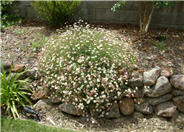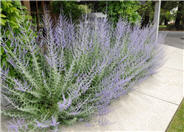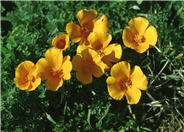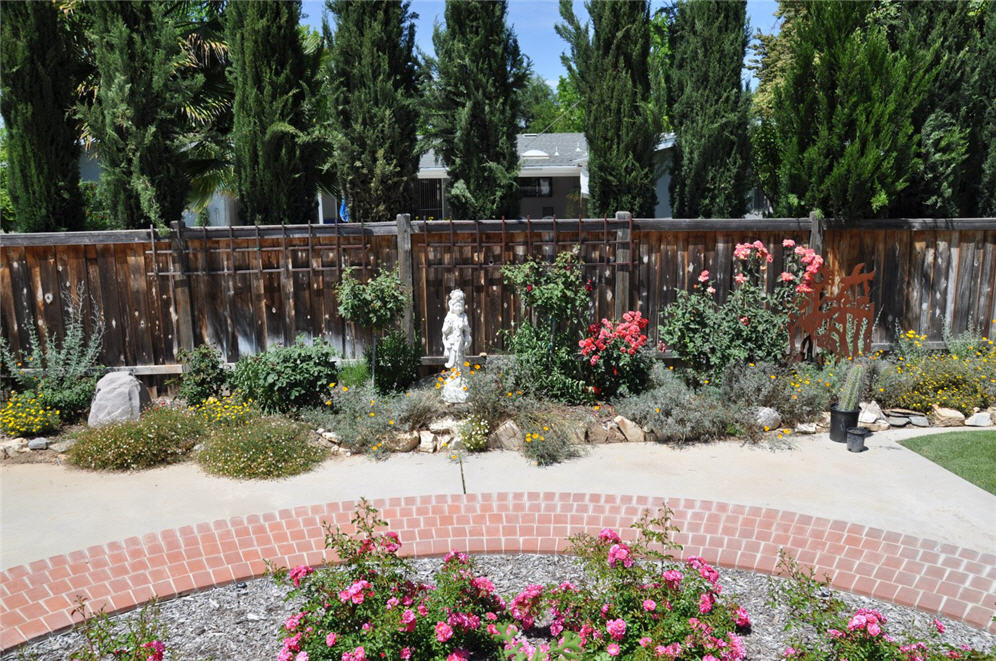
Common name:Hybrid Tea Rose cultivar
Botanical name:Rosa Hybrid Tea selection
Hybrid tea roses are the traditional classic roses; buds are used for boutonnieres. These roses have long stems with a single rose at the end, which may or may not be fragrant. Blooms typically start in spring until fall. Many colors now available. Roses prefer full to part sun with well draining, rich soil. It needs fertilizer after each bloom period. It prefers medium watering and more in hot summer areas. Mulch well. Prune in winter. It usually grows 2'-6' tall.

Common name:Santa Barbara or Mexican Daisy
Botanical name:Erigeron karvinskianus
This low mounding perennial, with fine leaves and white to pinkish daisy-like flowers, is an excellent asset to rock gardens.

Common name:Columnar Italian Cypress
Botanical name:Cupressus sempervirens 'Stricta'
Italian Cypress is often associated with Italian and Spanish architecture, providing columns in the landscape. They often reach 40'- 60' tall. 'Stricta' is compact, columnar and produces long, straight branches with deep green foliage. Once it's established, it is drought tolerant. Provide well draining soil. Do not plant near ocean.

Common name:Azure or Russian Sage
Botanical name:Perovskia X atriplicifolia
This broad perennial will grow 3'-6' tall and has small, grey-green leaves with blue-violet flowers that bloom in the summer. Foliage is aromatic if brushed against it.

Common name:California or Golden Poppy
Botanical name:Eschscholzia californica
This small annual (sometimes acts as a perennial) plant will grow to less than 1' tall and has light, small blue-green leaves with gold and orange flowers that bloom in spring and summer.

Common name:Shrub Rose
Botanical name:Rosa Shrub varieties
The dark green, heavily veined leaves of this bushy shrub are strong support for the pure white or pink, nearly double flowers it produces. This is a very tolerant, heavily scented plant with an impressive fall color. Also, large hips appear intermittently with this plant.
| Designer: | Brick Edging |
Photographer: GardenSoft |
Soils and Compost:
Maintain a two to four inch layer of mulch on the soil surface to reduce weeds, infiltrate rain water, and reduce compaction.
Water Saving Tip:
Apply as little fertilizer as possible.
If you use fertilizer make sure it stays on the landscape, and carefully water it in so there is NO runoff.
Integrated Pest Management:
Remove irrigation water and fertilizer from areas where you don't want weeds to grow.

